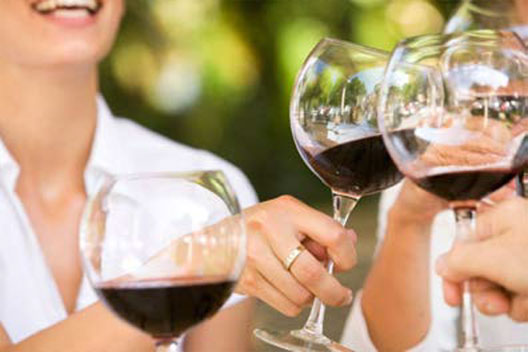the smell before they actually taste the wine. So once you have smelled the wine, you might like to allow a few moments to take it in. Try closing your eyes to intensify the aroma.
You'll be amazing to learn your sense of smell has a major impact on the taste of the wine. In fact, over 75% of our taste is due to our sense of smell. When we have a cold, our sense of smell is affected. Therefore, when eating or tasting wine with a cold, the taste will appear different. Wine tasters all over the world will tell you that tasting wine is more about a sense of smell than the actual taste buds.
Get a taste for wine
Last but not least, is to taste the wine. To properly taste the wine, you should first take a sip, swish it around in your mouth, and then swallow. Your tongue has taste buds in the front and the back, which helps to detect flavours. That's why it's always important to swish the wine around in your mouth for a few seconds. It allows the flavours plenty of time to dance on your palate. Once your taste buds have started to discover the wine, you can think about what you are tasting, and then swallow the wine. The aftertaste that remains in your mouth should give you even more of an idea as to the type and flavour of the wine.
Now its time to evaluate the wine!
Once you have looked at the wine, smelled it, and finally tasted it, you'll be able to evaluate the wine. This is the easiest way to determine the quality of the wine, and whether or not it has been properly stored and aged. As with all things in life - the more you taste wine - the better you will get at distinguishing the unique flavours.
Do some research
Try and learn as much as you can about the many different flavours and varieties of wine. This way, you'll have a better understanding of what you should look for in both taste and flavour. You'll also learn how different grape varieties, soils and different climates effect the taste of the wine.
Now why not organise a wine tasting party!
Now you know the basically of wine tasting, why not invite some friends around to taste test a selection of French and Australian wines. It's interesting and fun to taste the differences between the wines from two different parts of the world. And you can all discuss which qualities you can taste in the wines. You can even do it in a fun French accent!



